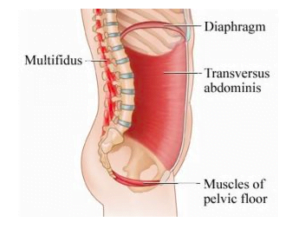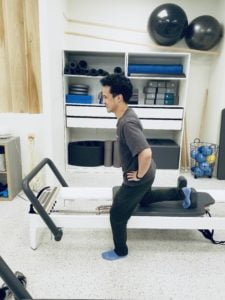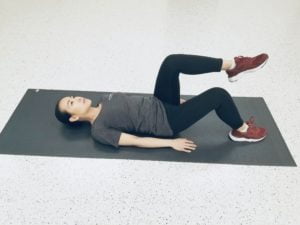What is the most common condition Physiotherapists treat, you ask? Well, one of the top culprits is Low Back Pain. Lower back pain and injury is a common condition and does affect a large portion of our population. Peter O’Sullivan, known to many as a guru in the Physiotherapy world on low back pain management has indicated that 80% of the population will experience lower back pain in their lifetime (O’Sullivan, 2005).
Whilst most episodes of low back pain usually resolve in 4 weeks, the recurrence rate of episodes of lower back pain is high and can best be managed with prevention strategies.
We often hear individuals say they “put out their back or their back has locked up.” First off, your back cannot go “out”. Your spine is strong and flexible and can withstand a lot of force! Your lower back consists of bones, called vertebrae and these vertebrae are connected to each other by gelatinous material called discs. The vertebrae and discs are supported by multiple muscles and ligaments which all work together to produce movement and stability of the spine.
Causes of Lower Back Pain
Sustained postures such as prolonged sitting and repetitive or heavy lifting movements are the common causes of low back pain. These actions can lead to excessive stretching of muscles and ligaments supporting the spine as well as the increased load on the discs of the spine.

People who are more prone to lower back injuries often have pre-existing weakness in their postural stabilizing muscles, such as their deep core muscles. This includes the diaphragm, transverse abdominis, pelvic floor, and multifidus. These muscles are extremely important to the overall stability of our lower spinal segments as it acts as a corset and wraps around the entire lower torso and supports the thorax above and the pelvis below. Not only is there more compression on your spine when sitting but these deep core muscles are also less active in sitting than in an upright/standing posture.
Back Pain Treatment
Physiotherapy can help to alleviate your lower back pain. Starting with a thorough assessment is imperative. Everybody has different stressors, history, and compensatory patterns that come with their injuries and symptoms. We will always start with a detailed history, assess your movement patterns from head to toe, and determine your areas that need attention. Lower back pain rarely arises from an issue just in the lower back itself and thus we may address the limitations in your thoracic spine, hip, ankle/foot, overall core strength or maybe all of the above!
Physiotherapy treatment of your lower back pain will likely involve some of the following:
- Corrective or facilitative taping techniques for the lower back can reduce muscle spasm and maintain more comfortable postures
- Spinal and peripheral (i.e. hip, ankle, etc) joint mobilization techniques and soft tissue massage to improve flexibility
- Stabilization exercises to improve the strength of postural and stabilizing muscles. At Reformotiv, we often utilize our advanced training in Clinical Pilates to teach these exercises to our clients
Below are some of our go-to clinical equipment pilates exercises and home exercises for lower back pain.
Clinical Equipment Pilates:

Reformer Scooter is an exercise that challenges core control, hip stability and glute strength. By training these areas we ensure a better support system to protect our low back.
It is also a very functional exercise that works on movement patterns necessary for walking, running, jumping, and bending….to name a few!
- Tower Thoracic Assisted Rotation
- 100’s prep
- Leg floats
Home Exercises

Single leg heel taps
Alternate heel taps is a home exercise I often prescribe as it challenges lumbopelvic control. It challenges your deep core to fire up to create stability as you dissociate your leg movement from the rest of your body.
Essentially we place our hip in a ‘neutral spine’ and try to maintain that position as we tap our heels one at a time starting from a tabletop position.
- Bent knee fall outs
- Glute bridges – single leg and/or double leg
Book in now to learn more about why your lower back pain persists, what you can do about it, and how you can regain the confidence and quality of movement you deserve! #ReformMovementUnleashPotential

